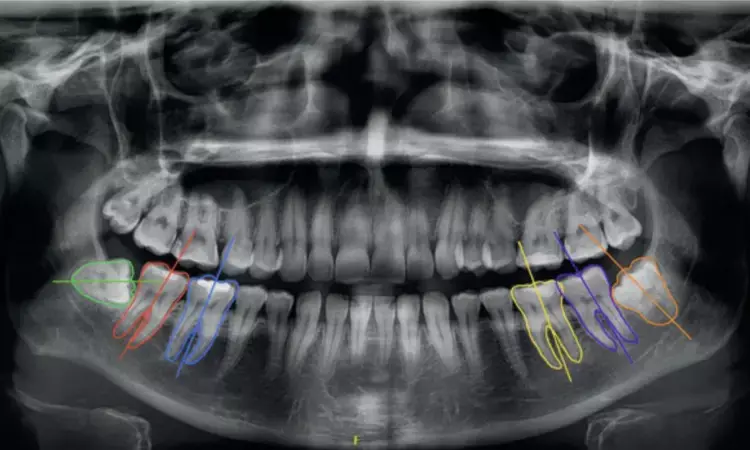- Home
- Medical news & Guidelines
- Anesthesiology
- Cardiology and CTVS
- Critical Care
- Dentistry
- Dermatology
- Diabetes and Endocrinology
- ENT
- Gastroenterology
- Medicine
- Nephrology
- Neurology
- Obstretics-Gynaecology
- Oncology
- Ophthalmology
- Orthopaedics
- Pediatrics-Neonatology
- Psychiatry
- Pulmonology
- Radiology
- Surgery
- Urology
- Laboratory Medicine
- Diet
- Nursing
- Paramedical
- Physiotherapy
- Health news
- Fact Check
- Bone Health Fact Check
- Brain Health Fact Check
- Cancer Related Fact Check
- Child Care Fact Check
- Dental and oral health fact check
- Diabetes and metabolic health fact check
- Diet and Nutrition Fact Check
- Eye and ENT Care Fact Check
- Fitness fact check
- Gut health fact check
- Heart health fact check
- Kidney health fact check
- Medical education fact check
- Men's health fact check
- Respiratory fact check
- Skin and hair care fact check
- Vaccine and Immunization fact check
- Women's health fact check
- AYUSH
- State News
- Andaman and Nicobar Islands
- Andhra Pradesh
- Arunachal Pradesh
- Assam
- Bihar
- Chandigarh
- Chattisgarh
- Dadra and Nagar Haveli
- Daman and Diu
- Delhi
- Goa
- Gujarat
- Haryana
- Himachal Pradesh
- Jammu & Kashmir
- Jharkhand
- Karnataka
- Kerala
- Ladakh
- Lakshadweep
- Madhya Pradesh
- Maharashtra
- Manipur
- Meghalaya
- Mizoram
- Nagaland
- Odisha
- Puducherry
- Punjab
- Rajasthan
- Sikkim
- Tamil Nadu
- Telangana
- Tripura
- Uttar Pradesh
- Uttrakhand
- West Bengal
- Medical Education
- Industry
AI system improves accuracy of CBCT images for implant placement, third molar extraction and orthognathic surgery: Study

AI system improves accuracy of CBCT images for implant placement, third molar extraction and orthognathic surgery suggests a new study published in the Journal of Dentistry.
A study was done to develop a deep learning-based system for precise, robust, and fully automated segmentation of the mandibular canal on cone beam computed tomography (CBCT) images. The system was developed on 536 CBCT scans (training set: 376, validation set: 80, testing set: 80) from one center and validated on an external dataset of 89 CBCT scans from 3 centers. Each scan was annotated using a multi-stage annotation method and refined by oral and maxillofacial radiologists. We proposed a three-step strategy for the mandibular canal segmentation: extraction of the region of interest based on 2D U-Net, global segmentation of the mandibular canal, and segmentation refinement based on 3D U-Net. Results: The system consistently achieved accurate mandibular canal segmentation in the internal set (Dice similarity coefficient [DSC], 0.952; intersection over union [IoU], 0.912; average symmetric surface distance [ASSD], 0.046 mm; 95% Hausdorff distance [HD95], 0.325 mm) and the external set (DSC, 0.960; IoU, 0.924; ASSD, 0.040 mm; HD95, 0.288 mm). These results demonstrated the potential clinical application of this AI system in facilitating clinical workflows related to mandibular canal localization. Accurate delineation of the mandibular canal on CBCT images is critical for implant placement, mandibular third molar extraction, and orthognathic surgery. This AI system enables accurate segmentation across different models, which could contribute to more efficient and precise dental automation systems.
Reference:
Fang-Duan Ni, Zi-Neng Xu, Mu-Qing Liu, Min-Juan Zhang, Shu Li, Hai-Long Bai, Peng Ding, Kai-Yuan Fu.Towards clinically applicable automated mandibular canal segmentation on CBCT, Journal of Dentistry, Volume 144, 2024, 104931, ISSN 0300-5712,
https://doi.org/10.1016/j.jdent.2024.104931.
(https://www.sciencedirect.com/science/article/pii/S0300571224001015)
Keywords:
Journal of Dentistry, AI system, improves, accuracy, CBCT images, implant placement, third molar extraction, orthognathic surgery, study, Fang-Duan Ni, Zi-Neng Xu, Mu-Qing Liu, Min-Juan Zhang, Shu Li, Hai-Long Bai, Peng Ding, Kai-Yuan Fu, Mandibular canal; Inferior alveolar nerve; Cone beam computed tomography; Deep learning; Convolutional neural networks
Dr. Shravani Dali has completed her BDS from Pravara institute of medical sciences, loni. Following which she extensively worked in the healthcare sector for 2+ years. She has been actively involved in writing blogs in field of health and wellness. Currently she is pursuing her Masters of public health-health administration from Tata institute of social sciences. She can be contacted at editorial@medicaldialogues.in.


